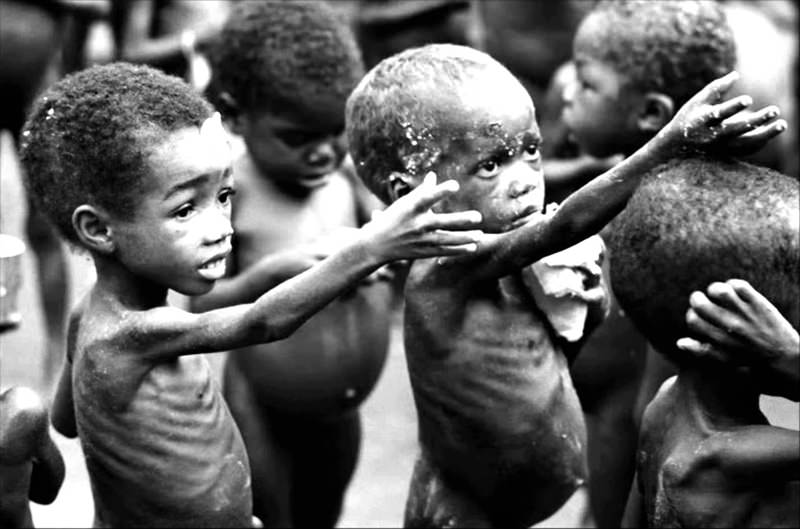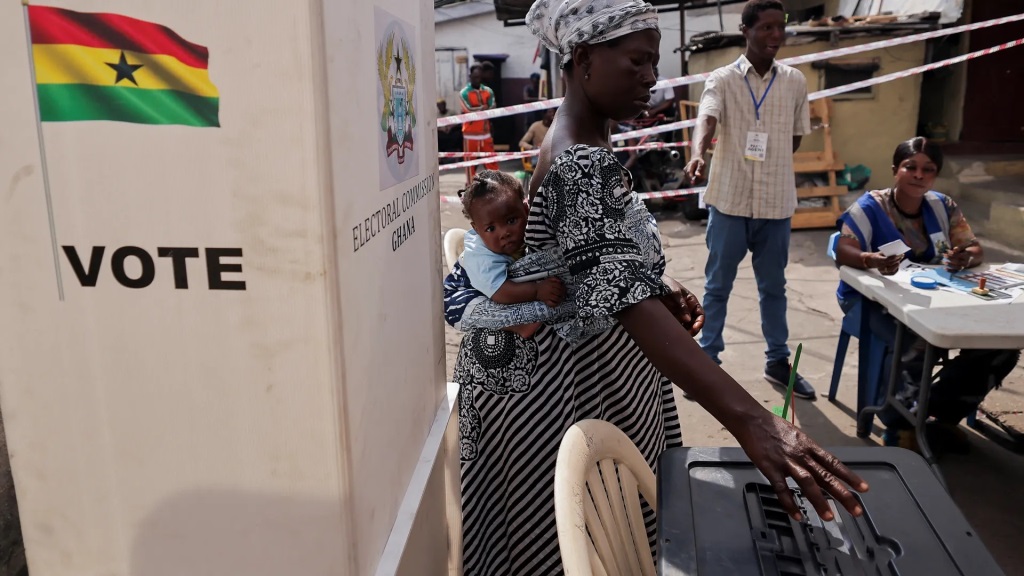Feature/OPED
Hunger: Beyond The Numbers

By Elvis Eromosele
The world is run by numbers. With numbers, we measure, rank and position. In many parts of the world, numbers decide elections, determine the distribution of economic resources and serve as a yardstick for measuring progress. Understanding numbers, therefore, is an important way to appreciate issues.
Today, there is a number for nearly everything. The most impressive ones are those that show trends.
The World Bank is big on numbers. The numbers from its research influence policies in countless countries and organisations.
It estimates that almost 10 per cent of the world’s population, or 734 million people, are poor. That is, about 734 million people in the world live on less than $1.90 per day. The sad part is that a full half of the total number of poor people in the world live in just five countries.
Nigeria is one of those five countries. There are more than 82 million poor people in Nigeria, according to the National Bureau of Statistics (NBS).
Numbers paint a picture. This is true. It is, however, not always a pretty picture. Numbers also tell stories. But it is not always the whole story. As Ron DeLegge II noted in Gents with No Cents, “99 per cent of all statistics only tell 49 per cent of the story.”
Take the number 800 million. This number can mean anything or mean nothing. But for the Food and Agriculture Organization (FAO) of the United Nations, it is the number of people worldwide who are hungry and suffer from nutrient deficiencies. The FAO also estimates that approximately one billion people have inadequate protein intake.
The Nigeria Protein Deficiency Report supports this assertion. The report indicates that the protein intake of Nigerians is generally quite insufficient.
Sometimes, numbers are not just figures. They are people. They are a catalogue of the world’s most persistence problems. Problems that must be resolved to improve life for all.
Experts insist that the world is also going to be saved by numbers. If this is true, then 17 must be the figure. The reason is not far-fetched – 17 represents the number of Sustainable Development Goals (SDGs).
The SDGs are a collection of 17 global goals designed as a “blueprint to achieve a better and more sustainable future for all”. Set in 2015 by the United Nations General Assembly, the SDGs are intended to be achieved by the year 2030.
The goals are meant to address the global challenges, including those related to poverty, nutrition, inequality, climate change, environmental degradation, peace and justice. The 17 Goals are all interconnected, and, to leave no one behind, they all must be achieved. The period 2020 to 2030 has therefore been declared as the Decade of Action.
Specifically, SDG 2 seeks to end hunger, achieve food security and improved nutrition and promote sustainable agriculture. The target of SDG 2 is zero hunger.
To achieve zero hunger calls for genuine commitment. It requires a number of stakeholders, across the public and private sectors, to find a reason to work together for the common good. While progress had been made in this space, the coronavirus pandemic has greatly heightened the challenges, especially for the most vulnerable.
The pandemic is just one of many challenges. The population growth rate is another. The world population is today put at 7.8 billion but it is projected to reach 8.6 billion in 2030, 9.8 billion in 2050 and 11.2 billion in 2100, according to a United Nations report.
The global population growth compounds the challenge of curtailing hunger and malnutrition. It dictates that efforts be intensified to achieve zero hunger.
Experts rightly point out that the impact of hunger is far-reaching. Hunger produces malnutrition, stunted growth, wasting, babies born prematurely, low birth weights, and in severe cases, infant and child mortalities. And this is only on the physical side.
Hunger also causes the economy to suffer. The cost of illness and attendant healthcare; the value of poor educational outcomes and subsequent lower lifetime earnings linked to hunger; and the price of reduced labour productivity precipitated by absenteeism are huge and incalculable.
Whatever these numbers are, they represent waste, avoidable waste. To end this waste, the quest to achieve zero hunger must be pursued relentlessly.
Of course, the problem is not just the numbers. It is what they represent. So, beyond the numbers, action is required.
Now, when it comes to flipping the numbers, the government has an important role to play. In many ways, it must take the lead. To start with, it must take another look at its policies. It must seek to actively implement policies that truly empower citizens, by boosting the capacity to earn, so that people can live meaningful and productive lives.
To reduce the number of hungry people in Nigeria, and indeed across the world, citizen empowerment is key. As the Nigeria Protein Deficiency Report revealed affordability and availability are the key factors in food choice among Nigerians. The report, which shed light on food consumption patterns among Nigerians, fingers high cost as a major disincentive for the consumption of most nutrient-rich protein food in the country.
Furthermore, the government must support and indeed promote sustainable farming practices to achieve food security.
Next, there has to be a deliberate, conscious intensive nationwide campaign to create awareness about the need to improve access to nutritious food. This would involve orientation on the advantages of eating right, with nutrient-rich foods held up as essential for a healthier life.
Protein Challenge, a protein-pull media campaign supported by the United States Soybean Export Council (USSEC) and other partners, is working in that space to create awareness about the prevalence, status and impact of protein deficiency in Nigeria. Action Against Hunger and the Global Alliance for Improved Nutrition (GAIN) and other similar organisations are also here represented.
Eliminating hunger in Nigeria would mean successfully flipping the numbers. It will signify a huge step towards improved living condition for the citizens.
To achieve the SDG 2, we must look beyond the numbers.
Elvis Eromosele, a Corporate Communication professional and public affairs analyst, lives in Lagos.
Feature/OPED
The Future of Payments: Key Trends to Watch in 2025

By Luke Kyohere
The global payments landscape is undergoing a rapid transformation. New technologies coupled with the rising demand for seamless, secure, and efficient transactions has spurred on an exciting new era of innovation and growth. With 2025 fast approaching, here are important trends that will shape the future of payments:
1. The rise of real-time payments
Until recently, real-time payments have been used in Africa for cross-border mobile money payments, but less so for traditional payments. We are seeing companies like Mastercard investing in this area, as well as central banks in Africa putting focus on this.
2. Cashless payments will increase
In 2025, we will see the continued acceleration of cashless payments across Africa. B2B payments in particular will also increase. Digital payments began between individuals but are now becoming commonplace for larger corporate transactions.
3. Digital currency will hit mainstream
In the cryptocurrency space, we will see an increase in the use of stablecoins like United States Digital Currency (USDC) and Tether (USDT) which are linked to US dollars. These will come to replace traditional cryptocurrencies as their price point is more stable. This year, many countries will begin preparing for Central Bank Digital Currencies (CBDCs), government-backed digital currencies which use blockchain.
The increased uptake of digital currencies reflects the maturity of distributed ledger technology and improved API availability.
4. Increased government oversight
As adoption of digital currencies will increase, governments will also put more focus into monitoring these flows. In particular, this will centre on companies and banks rather than individuals. The goal of this will be to control and occasionally curb runaway foreign exchange (FX) rates.
5. Business leaders buy into AI technology
In 2025, we will see many business leaders buying into AI through respected providers relying on well-researched platforms and huge data sets. Most companies don’t have the budget to invest in their own research and development in AI, so many are now opting to ‘buy’ into the technology rather than ‘build’ it themselves. Moreover, many businesses are concerned about the risks associated with data ownership and accuracy so buying software is another way to avoid this risk.
6. Continued AI Adoption in Payments
In payments, the proliferation of AI will continue to improve user experience and increase security. To detect fraud, AI is used to track patterns and payment flows in real-time. If unusual activity is detected, the technology can be used to flag or even block payments which may be fraudulent.
When it comes to user experience, we will also see AI being used to improve the interface design of payment platforms. The technology will also increasingly be used for translation for international payment platforms.
7. Rise of Super Apps
To get more from their platforms, mobile network operators are building comprehensive service platforms, integrating multiple payment experiences into a single app. This reflects the shift of many users moving from text-based services to mobile apps. Rather than offering a single service, super apps are packing many other services into a single app. For example, apps which may have previously been used primarily for lending, now have options for saving and paying bills.
8. Business strategy shift
Recent major technological changes will force business leaders to focus on much shorter prediction and reaction cycles. Because the rate of change has been unprecedented in the past year, this will force decision-makers to adapt quickly, be decisive and nimble.
As the payments space evolves, businesses, banks, and governments must continually embrace innovation, collaboration, and prioritise customer needs. These efforts build a more inclusive, secure, and efficient payment system that supports local to global economic growth – enabling true financial inclusion across borders.
Luke Kyohere is the Group Chief Product and Innovation Officer at Onafriq
Feature/OPED
Ghana’s Democratic Triumph: A Call to Action for Nigeria’s 2027 Elections

In a heartfelt statement released today, the Conference of Nigeria Political Parties (CNPP) has extended its warmest congratulations to Ghana’s President-Elect, emphasizing the importance of learning from Ghana’s recent electoral success as Nigeria gears up for its 2027 general elections.
In a statement signed by its Deputy National Publicity Secretary, Comrade James Ezema, the CNPP highlighted the need for Nigeria to reclaim its status as a leader in democratic governance in Africa.
“The recent victory of Ghana’s President-Elect is a testament to the maturity and resilience of Ghana’s democracy,” the CNPP stated. “As we celebrate this achievement, we must reflect on the lessons that Nigeria can learn from our West African neighbour.”
The CNPP’s message underscored the significance of free, fair, and credible elections, a standard that Ghana has set and one that Nigeria has previously achieved under former President Goodluck Jonathan in 2015. “It is high time for Nigeria to reclaim its position as a beacon of democracy in Africa,” the CNPP asserted, calling for a renewed commitment to the electoral process.
Central to CNPP’s message is the insistence that “the will of the people must be supreme in Nigeria’s electoral processes.” The umbrella body of all registered political parties and political associations in Nigeria CNPP emphasized the necessity of an electoral system that genuinely reflects the wishes of the Nigerian populace. “We must strive to create an environment where elections are free from manipulation, violence, and intimidation,” the CNPP urged, calling on the Independent National Electoral Commission (INEC) to take decisive action to ensure the integrity of the electoral process.
The CNPP also expressed concern over premature declarations regarding the 2027 elections, stating, “It is disheartening to note that some individuals are already announcing that there is no vacancy in Aso Rock in 2027. This kind of statement not only undermines the democratic principles that our nation holds dear but also distracts from the pressing need for the current administration to earn the trust of the electorate.”
The CNPP viewed the upcoming elections as a pivotal moment for Nigeria. “The 2027 general elections present a unique opportunity for Nigeria to reclaim its position as a leader in democratic governance in Africa,” it remarked. The body called on all stakeholders — including the executive, legislature, judiciary, the Independent National Electoral Commission (INEC), and civil society organisations — to collaborate in ensuring that elections are transparent, credible, and reflective of the will of the Nigerian people.
As the most populous African country prepares for the 2027 elections, the CNPP urged all Nigerians to remain vigilant and committed to democratic principles. “We must work together to ensure that our elections are free from violence, intimidation, and manipulation,” the statement stated, reaffirming the CNPP’s commitment to promoting a peaceful and credible electoral process.
In conclusion, the CNPP congratulated the President-Elect of Ghana and the Ghanaian people on their remarkable achievements.
“We look forward to learning from their experience and working together to strengthen democracy in our region,” the CNPP concluded.
Feature/OPED
The Need to Promote Equality, Equity and Fairness in Nigeria’s Proposed Tax Reforms

By Kenechukwu Aguolu
The proposed tax reform, involving four tax bills introduced by the Federal Government, has received significant criticism. Notably, it was rejected by the Governors’ Forum but was still forwarded to the National Assembly. Unlike the various bold economic decisions made by this government, concessions will likely need to be made on these tax reforms, which involve legislative amendments and therefore cannot be imposed by the executive. This article highlights the purposes of taxation, the qualities of a good tax system, and some of the implications of the proposed tax reforms.
One of the major purposes of taxation is to generate revenue for the government to finance its activities. A good tax system should raise sufficient revenue for the government to fund its operations, and support economic and infrastructural development. For any country to achieve meaningful progress, its tax-to-GDP ratio should be at least 15%. Currently, Nigeria’s tax-to-GDP ratio is less than 11%. The proposed tax reforms aim to increase this ratio to 18% within the next three years.
A good tax system should also promote income redistribution and equality by implementing progressive tax policies. In line with this, the proposed tax reforms favour low-income earners. For example, individuals earning less than one million naira annually are exempted from personal income tax. Additionally, essential goods and services such as food, accommodation, and transportation, which constitute a significant portion of household consumption for low- and middle-income groups, are to be exempted from VAT.
In addition to equality, a good tax system should ensure equity and fairness, a key area of contention surrounding the proposed reforms. If implemented, the amendments to the Value Added Tax could lead to a significant reduction in the federal allocation for some states; impairing their ability to finance government operations and development projects. The VAT amendments should be holistically revisited to promote fairness and national unity.
The establishment of a single agency to collect government taxes, the Nigeria Revenue Service, could reduce loopholes that have previously resulted in revenue losses, provided proper controls are put in place. It is logically easier to monitor revenue collection by one agency than by multiple agencies. However, this is not a magical solution. With automation, revenue collection can be seamless whether it is managed by one agency or several, as long as monitoring and accountability measures are implemented effectively.
The proposed tax reforms by the Federal Government are well-intentioned. However, all concerns raised by Nigerians should be looked into, and concessions should be made where necessary. Policies are more effective when they are adapted to suit the unique characteristics of a nation, rather than adopted wholesale. A good tax system should aim to raise sufficient revenue, ensure equitable income distribution, and promote equality, equity, and fairness.
-

 Feature/OPED5 years ago
Feature/OPED5 years agoDavos was Different this year
-
Travel/Tourism8 years ago
Lagos Seals Western Lodge Hotel In Ikorodu
-

 Showbiz2 years ago
Showbiz2 years agoEstranged Lover Releases Videos of Empress Njamah Bathing
-

 Banking6 years ago
Banking6 years agoSort Codes of GTBank Branches in Nigeria
-

 Economy2 years ago
Economy2 years agoSubsidy Removal: CNG at N130 Per Litre Cheaper Than Petrol—IPMAN
-

 Banking2 years ago
Banking2 years agoFirst Bank Announces Planned Downtime
-

 Sports2 years ago
Sports2 years agoHighest Paid Nigerian Footballer – How Much Do Nigerian Footballers Earn
-

 Technology4 years ago
Technology4 years agoHow To Link Your MTN, Airtel, Glo, 9mobile Lines to NIN


















